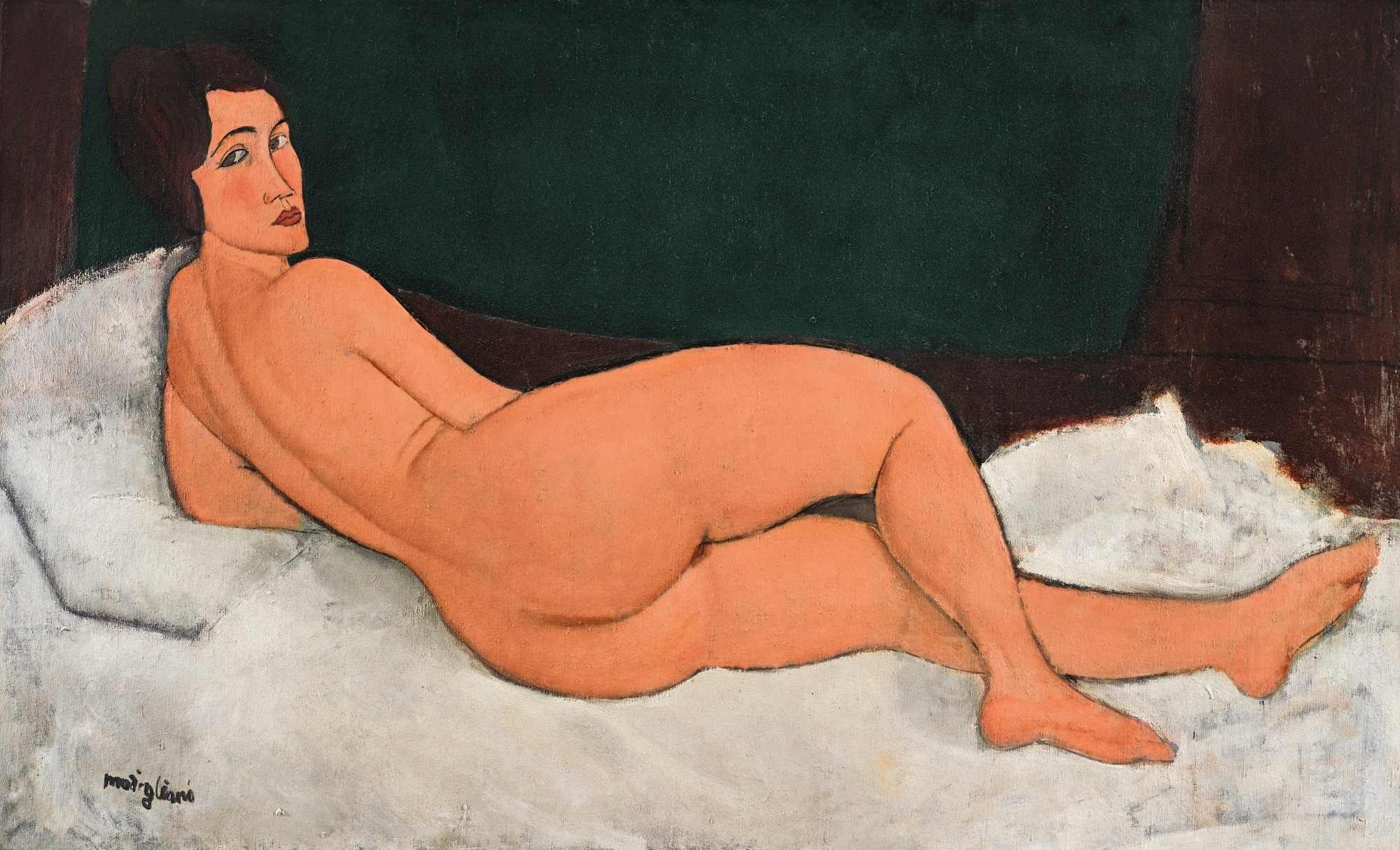A decade ago, art, data, and technology were like different planets, each with their own cultural biomes. The evolution of blockchain technology has merged them into a single world. The Alan Turing Institute and The University of Oxford have embraced blockchain-based ledgers to overcome fraud, tax evasion, and illicit business practices.
For the middle-class investor, however, blockchain offers an entirely different benefit: It makes investment pieces that were once unavailable to all but the wealthiest people accessible. By eliminating influential intermediaries and enabling group investments, it lets people like you invest in the best artworks history has ever known.
The biggest performers of 2018 included van Gogh, Andy Warhol, da Vinci, and Picasso--the kind of names that will never lose their value. Few buyers can scrape $20 million out of their bank accounts, and, thanks to blockchain, they no longer need to. 2018's most notable purchases included the most celebrated artists of the last century, but cryptocurrency and blockchain have also introduced some interesting new trends. The most important of these is the accessibility the technology is creating for all income groups. If you've always wanted to own a coveted Monet or Picasso, blockchain technology trends suggest that you'll soon be able to make that bid. If you're not sure you should invest in those coveted masterpieces, historic appreciation trends will soothe your anxieties and those of your financial advisor.
Sales of More Traditional Pieces

Amadeo Modigliani "Nu couché (sur le côté gauche)" via Sotheby's
1) Nu Couche
Modigliani's renowned "Nu Couche," became one of the most valuable masterpieces ever auctioned when it was sold for a grand $157.2 million in May. Its previous owner bought it for $26.9 million in 2003, which puts his profit at over $100 million. This degree of appreciation isn't new to the art world. Rare and precious Caravaggio work sells for up to $300 million today, while Cezannes fetch $20 million more. If you owned a da Vinci, you could expect to fetch a cool $450 million per painting. Of course, art investment requires you to choose the right artists, but this becomes decidedly easier when you have the collective wealth of blockchain technology behind you. Dada and Monet are, after all, always going to be precious, and now they're also accessible.
This year's top sales performers included van Gogh, Bacon, Picasso, and Rothko. There are no surprises on that list, but following close behind are Kerry James Marshall, David Hockney, and Mark Bradford. James Marshall and Hockney artworks were sold for a respectable $21 and $90 million. Contemporary art investment comes with its own reward. You can usually delight in the knowledge that you're supporting a living artist and potentially place yourself at the cusp of massive appreciation. Buy well, and the price you sell at will be vastly higher than the one you paid. The art world gives generously across all investment styles, too, from risky speculative investments to stable blue chip ones. You can safely diversify your portfolio, creating all the sturdiness of a traditional collection of stocks and bonds.
A New Wave of Art Sales

The "Forever Rose" by Kevin Abosh was sold via blockchain for $1 million.
2) A Rose, by Any Other Name
In February 2018, a group of investors pooled their funds to buy a $1 million digital photograph of a rose. The Forever Rose (foreverrose.io) was created by Kevin Abosch and sold via blockchain. Never before has art investment been this abstract, partly because digital ledgers with potent authentication tools didn't exist yet. Over 150 buyers competed for the Forever Rose, proving that the crypto art movement is here to stay. It creates rarity, thereby securing investment potential. Blockchain technology has made digital art provably scarce and decentralised, so the Great Masters can expect some new competition as the blockchain art world races ahead. The first blockchain-based auction happened as recently as May 2018, but it's already starting to push digital art into the blue-chip realm.
A venture capitalist recently spent $400, 000 on a different Kevin Abosch called "Yellow Lambo." The piece symbolises cryptocurrency's wealth, signaling the ubiquity of digital coin in today's world while simultaneously adding to its buyer's crypto portfolio. Assets no longer need to be held in the hand to have value, and Abosch is leading the abstract sector as a result.
 Pepe the frog via Wikipedia
Pepe the frog via Wikipedia
3) Pepe the Frog
Pepe the Frog represents an important subculture, so it's unsurprising that it's crawled into the centre of the crypto art world. Speculators and artists are repurposing Pepe as a blockchain investment. None are collecting quite as much money as The Forever Rose but, collectively, they've fetched over a million dollars. Pepe Art is gaining ground, with investments having climbed to $600 from their humble beginnings as $10 pieces.
4) Andy Warhol
Blockchain technology is equally influential in the classic arts market. The first blockchain art auction of traditional work gathered a number of eager bidders in June, ultimately selling 49% of an Andy Warhol screen called 14 Small Electric Chairs. The initial owner, Eleesa Dadiani, acquired the work the old-fashioned way, and blockchain allowed her to keep a controlling hand on the work despite the sale of shares. The bidders will play a role in deciding where the work will be displayed in the future. Maecenas Fine Art democratised the ownership of fine art through the sale, allowing investors to own and invest in valuable paintings. There's little certainty in the world of investment, but when Warhol or Picasso enter the picture, so to speak, investments become decidedly sturdier. There will never be a new Van Gogh, and therein lies the magic and profitability of ownership.
5) Study for Self-portrait
One of the easiest ways to add a great master's work to your hallway for less than $100 million is by acquiring lesser-known works by great artists. Francis Bacon's "Study for a Portrait" sold for just under $50 million on auction in May 2018. The piece exceeded its initial value by $14 million and, now that it's superseded expectations upon resale, the auction mechanism will influence its prices far into the future. Blockchain technology has now stepped into the mix, giving buyers the power to make intimidating bids. Fine art value is likely to enjoy increasing levels of appreciation in the near future. This is the moment when risk-averse buyers can enter the coveted terrain of high rollers.
There are many ways to invest in art, but its lack of liquidity has acted as a hurdle for middle class buyers. This element will rapidly evaporate through the Maecenas platform, giving you a reliable way to store your wealth.
The Death of a Monopoly
The banking industry is less than enthusiastic about the rise of cryptocurrency because it signals the end of its monopoly. In May this year, an artist named cryptograffiti (cryptograffiti.com) sold a piece called "Terrible Store of Value" for $33, 000 on auction. The artwork mocks the banking sector's contempt for blockchain technology, not only through the sale itself, but its content, too.
Andy Warhol famously said, "Making money is art," so he would doubtlessly have celebrated his participation in the crypto art movement had he been alive today.
Cryptocurrency has not only introduced a new way to buy art, but also a new form of digital art. The blockchain market is here to stay, and it's leaked into every aspect of ownership. Forgery and illegal reproductions can finally be relegated to history, and everyday investors can benefit from it.
Topics: Art Investment, Auctions





